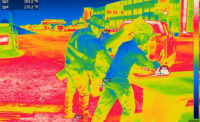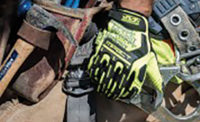We live in a world of color. From nature itself, to the intense display of the phones in our pockets, we are constantly looking out at a vivid display that can often be overwhelming.
With so much going on, it can often be difficult to spot the contrasting elements. The ability to discern a human being from their environment shouldn’t be as challenging as spotting a chameleon. Of the many concerns we have as drivers, the safety of pedestrians should be a cornerstone.
Make sure you’re noticed
As far as distractions while driving goes, there are plenty, so the need to stand out as a pedestrian is a must, and is the responsibility of the pedestrian to be noticed. Fading into the background when working in oncoming traffic can be a death wish. Independent of the situation, whether as a worker or even as someone crossing the street, you need to stand out.
The terminology used to be visible is conspicuity. The ability to be seen against the background. It’s easy to see a bright yellow hot air balloon on a clear summer’s day, but not so much the light blue one. In order to safely differentiate a worker from the site, the worker needs to be highly visible.
Highway workers surrounded by orange cones and barrels are better suited wearing yellow. If a driver needs to avoid an oncoming collision, they would opt to swerve the car to hit a barrel. In that instant, the odds that the driver makes out an orange safety vest over reflective covered plastic are very low.
Bright colors necessary
The majority of the high visibility safety apparel (HVSA) standards allow for three background colors to choose from, being fluorescent lime-yellow, fluorescent red-orange and fluorescent red. When selecting HVSA, the factors of style and ergonomics should be secondary to the color. It is important to do a full assessment of the work environment to determine the color of the garment, as well as the coverage needed so that the individual can be readily identified. In higher traffic areas, more coverage would be required, along with the suitable amount of reflective tape. The design of the garment, as well as the placement of the tape, either the standard harness or in the X on the back should be considered to ensure that the driver has better chances of seeing the person.



